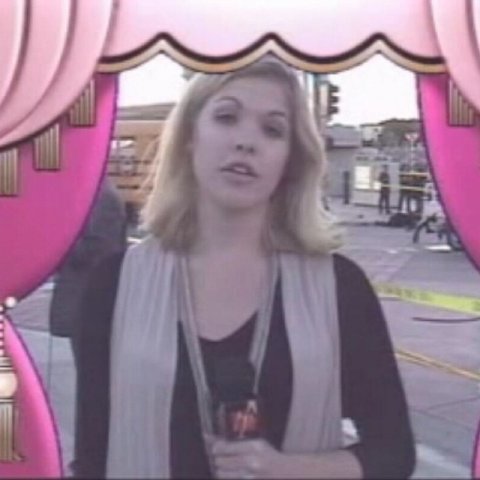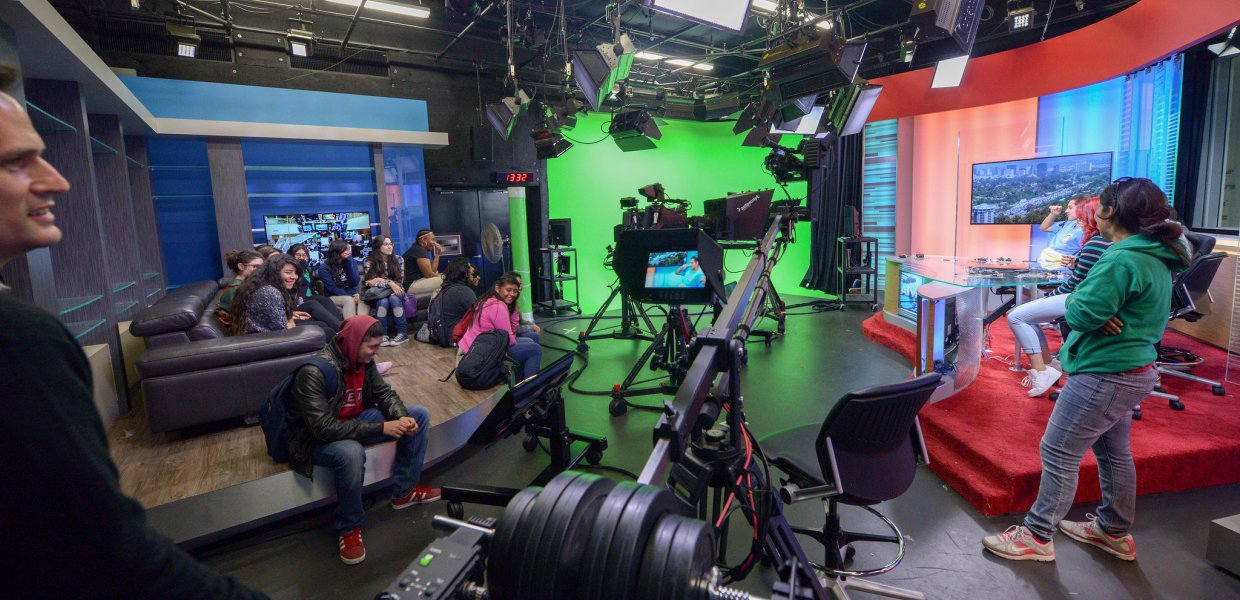In a new series of columns, each week an alum of USC Annenberg will share stories of their time at the school, discuss their career, and offer advice to students.
It was hard to believe the iNews alert that crossed my screen on the USC Annenberg TV News assignment desk: a high school bus had tipped over at a busy intersection in East Los Angeles. A pedestrian was killed, the driver was in critical condition and many students were injured. The normal chatter and bustle of the newsroom suddenly stopped as producers looked to the row of TV screens mounted on the wall above our desks. One by one, each local station switched to a helicopter shot of the tragic scene. In those few seconds of silence, we all knew our plan for the 6 p.m. show was about to change.
“We’ve got to get someone down there … NOW!” shouted the show’s lead producer, leaping to her feet as she scanned the room for a free reporter or anchor to send. She whipped around to the whiteboard where the team tracked reporter assignments. All on-air staffers were already in the field on other stories. After a long groan, she asked me to start calling off-duty reporters to fill in. Before I could pick up the phone, one of our faculty advisors stopped me. She smiled and asked if I’d ever done a live shot before.
I had never been on air in any capacity, let alone as a live correspondent. This was my first chance to cover an important, breaking story live — and to get my face on television. Terrified and thrilled, I agreed to head to the scene with our live streaming system called Streambox and a camera operator.
When we arrived, I was ready to put my journalism coursework to use. I read all the local news articles on the crash I could find, turned to Twitter for more real-time information, and prepared a list of questions for emergency personnel. My camera operator found a shot location with the bus in the background while I checked facts with the Public Information Officer from the fire department. I raced to write a script and read through it several times for accuracy and pronunciation. I was ready for my big TV debut.

As soon as we passed through the ATVN door, we were greeted by a deafening wave of guffaws and shrieks of laughter. My camera operator and I exchanged puzzled looks. The control room hadn’t mentioned a thing before or after we were on the air. Finally, a staff member pulled us back to an edit bay to take a look.
What I saw next filled me with the deepest shock I have ever experienced to this day. My serious, earnest face was surrounded by two garish, pink cartoon curtains. As my live report continued, the shot cycled through x-ray, sepia, red and green filters, before returning to the horrible pink drapes. Apparently, my camera operator accidentally hit a button on the camera that enabled “effects mode.” While I appeared to be trapped inside some kind of bizarre kaleidoscope, the control room and all ATVN viewers that evening were watching. My camera operator and I turned white as my production team insisted on watching it over and over again.
Part of me wanted to yell at my producers and the control room team for not cluing us in. Another part of me wanted to run out of the newsroom and hide. Then I noticed my camera operator’s face, which was even more ashen and embarrassed than mine. She had prepared for the report as cautiously as I had, by carefully setting up the shot, double-checking our Streambox connection and communicating frequently with the control room.
My frustration quickly turned to sympathy — and gratitude. She deserved to feel proud of her work and so did I. We had both had a new, exciting experience and learned one thing not to do again in the process. I sat down at the edit bay to watch my live television debut one more time — and actually found myself laughing.







